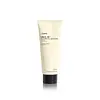What's inside
What's inside
 Key Ingredients
Key Ingredients

 Benefits
Benefits

 Concerns
Concerns

 Ingredients Side-by-side
Ingredients Side-by-side

Aloe Barbadensis Leaf Extract
EmollientGlycerin
HumectantWater
Skin ConditioningButylene Glycol
HumectantCaprylic/Capric Triglyceride
MaskingRosmarinus Officinalis Leaf Extract
AntimicrobialLavandula Angustifolia Extract
Skin Conditioning1,2-Hexanediol
Skin ConditioningPropanediol
SolventEthylhexylglycerin
Skin ConditioningVerbena Officinalis Extract
EmollientChamomilla Recutita Flower Extract
MaskingAcrylates/C10-30 Alkyl Acrylate Crosspolymer
Emulsion StabilisingArginine
MaskingPolyglyceryl-3 Methylglucose Distearate
EmulsifyingHydrolyzed Glycosaminoglycans
HumectantMaltodextrin
AbsorbentCeramide NP
Skin ConditioningTamarindus Indica Seed Polysaccharide
Skin ConditioningAloe Barbadensis Leaf Extract, Glycerin, Water, Butylene Glycol, Caprylic/Capric Triglyceride, Rosmarinus Officinalis Leaf Extract, Lavandula Angustifolia Extract, 1,2-Hexanediol, Propanediol, Ethylhexylglycerin, Verbena Officinalis Extract, Chamomilla Recutita Flower Extract, Acrylates/C10-30 Alkyl Acrylate Crosspolymer, Arginine, Polyglyceryl-3 Methylglucose Distearate, Hydrolyzed Glycosaminoglycans, Maltodextrin, Ceramide NP, Tamarindus Indica Seed Polysaccharide
Snail Secretion Filtrate
Skin ConditioningCaprylic/Capric Triglyceride
MaskingGlycerin
HumectantDipropylene Glycol
Humectant1,2-Hexanediol
Skin ConditioningCetearyl Alcohol
EmollientCetearyl Olivate
Sorbitan Olivate
EmulsifyingHydrolyzed Hibiscus Esculentus Extract
Skin ConditioningLupinus Albus Seed Extract
Skin ConditioningMoringa Oleifera Seed Extract
Skin ConditioningSodium Hyaluronate
HumectantWater
Skin ConditioningDimethicone
EmollientSodium Polyacrylate
AbsorbentHydroxyethyl Acrylate/Sodium Acryloyldimethyl Taurate Copolymer
Emulsion StabilisingPalmitic Acid
EmollientTromethamine
BufferingStearic Acid
CleansingEthylhexylglycerin
Skin ConditioningAdenosine
Skin ConditioningAllantoin
Skin ConditioningBetaine
HumectantMyristic Acid
CleansingArachidic Acid
CleansingLauric Acid
CleansingOleic Acid
EmollientTocopherol
AntioxidantCarbomer
Emulsion StabilisingXanthan Gum
EmulsifyingPhenoxyethanol
PreservativeSnail Secretion Filtrate, Caprylic/Capric Triglyceride, Glycerin, Dipropylene Glycol, 1,2-Hexanediol, Cetearyl Alcohol, Cetearyl Olivate, Sorbitan Olivate, Hydrolyzed Hibiscus Esculentus Extract, Lupinus Albus Seed Extract, Moringa Oleifera Seed Extract, Sodium Hyaluronate, Water, Dimethicone, Sodium Polyacrylate, Hydroxyethyl Acrylate/Sodium Acryloyldimethyl Taurate Copolymer, Palmitic Acid, Tromethamine, Stearic Acid, Ethylhexylglycerin, Adenosine, Allantoin, Betaine, Myristic Acid, Arachidic Acid, Lauric Acid, Oleic Acid, Tocopherol, Carbomer, Xanthan Gum, Phenoxyethanol
Ingredients Explained
These ingredients are found in both products.
Ingredients higher up in an ingredient list are typically present in a larger amount.
1,2-Hexanediol is a synthetic liquid and another multi-functional powerhouse.
It is a:
- Humectant, drawing moisture into the skin
- Emollient, helping to soften skin
- Solvent, dispersing and stabilizing formulas
- Preservative booster, enhancing the antimicrobial activity of other preservatives
This ingredient is an emollient, solvent, and texture enhancer. It is considered a skin-softener by helping the skin prevent moisture loss.
It helps thicken a product's formula and makes it easier to spread by dissolving clumping compounds.
Caprylic Triglyceride is made by combining glycerin with coconut oil, forming a clear liquid.
While there is an assumption Caprylic Triglyceride can clog pores due to it being derived from coconut oil, there is no research supporting this.
Learn more about Caprylic/Capric TriglycerideEthylhexylglycerin (we can't pronounce this either) is commonly used as a preservative and skin softener. It is derived from glyceryl.
You might see Ethylhexylglycerin often paired with other preservatives such as phenoxyethanol. Ethylhexylglycerin has been found to increase the effectiveness of these other preservatives.
Glycerin is already naturally found in your skin. It helps moisturize and protect your skin.
A study from 2016 found glycerin to be more effective as a humectant than AHAs and hyaluronic acid.
As a humectant, it helps the skin stay hydrated by pulling moisture to your skin. The low molecular weight of glycerin allows it to pull moisture into the deeper layers of your skin.
Hydrated skin improves your skin barrier; Your skin barrier helps protect against irritants and bacteria.
Glycerin has also been found to have antimicrobial and antiviral properties. Due to these properties, glycerin is often used in wound and burn treatments.
In cosmetics, glycerin is usually derived from plants such as soybean or palm. However, it can also be sourced from animals, such as tallow or animal fat.
This ingredient is organic, colorless, odorless, and non-toxic.
Glycerin is the name for this ingredient in American English. British English uses Glycerol/Glycerine.
Learn more about GlycerinWater. It's the most common cosmetic ingredient of all. You'll usually see it at the top of ingredient lists, meaning that it makes up the largest part of the product.
So why is it so popular? Water most often acts as a solvent - this means that it helps dissolve other ingredients into the formulation.
You'll also recognize water as that liquid we all need to stay alive. If you see this, drink a glass of water. Stay hydrated!
Learn more about Water